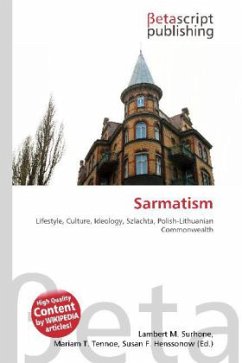Please note that the content of this book primarily consists of articles available from Wikipedia or other free sources online. Sarmatism, also Sarmatianism, embodied the dominant lifestyle, culture and ideology of the szlachta (polish nobility) in the Polish-Lithuanian Commonwealth from the 16th century to the 19th century. Together with Golden Liberty, it formed the unique aspects of the Commonwealth''s culture. The name and the culture were reflected in contemporary Polish literature, like Jan Chryzostom Pasek''s memoirs or the poems of Wac aw Potocki. Szlachta wore long coats trimmed with fur ( upany) and thigh-high boots, and bore sabres, (szable); mustaches were popular. The "Sarmatian" image which they strove to attain was an ideal of a nobility on horseback, equals among themselves (the "Golden Freedom") and invincible to foreigners.Sarmatism praised past victories of the Polish army, and required the Polish noblemen to cultivate this tradition. An inseparable element of their festive costume was the sabre, called the karabela.
Bitte wählen Sie Ihr Anliegen aus.
Rechnungen
Retourenschein anfordern
Bestellstatus
Storno








